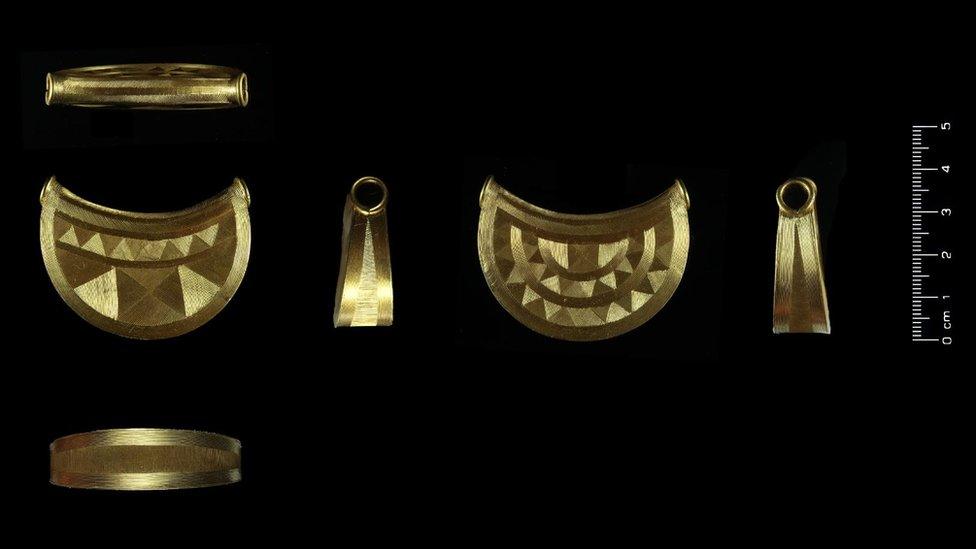Lincoln: Bronze Age sun pendant goes on display
- Published

The artefact dates back to between 1,000 and 800 BC in the late Bronze Age period
A sun pendant that dates back more than 3,000 years will go on display at a museum in Lincoln.
The artefact is an "exceptionally rare" depiction of the sun, not previously seen on objects found in Britain, according to The Collection museum.
The pendant is made from precious gold which shows the importance of the sun to the lives of Bronze Age people, a spokesperson said.
It is on loan from the British Museum along with several other artefacts.
The artefact, known as the Shropshire sun pendant, dates to between 1,000 and 800 BC in the late Bronze Age period.
Researchers believe the pendant may be one of the most significant pieces of Bronze Age metalwork discovered in Britain.
Other items discovered in Lincolnshire that have never been on display before will also be showcased at The Collection, according to senior collections development officer Dawn Heywood.
"We're delighted to partner with the British Museum for this spotlight loan and bring the Shropshire sun pendant and other significant Bronze Age artefacts to Lincolnshire," she said.
"It's a great opportunity to make connections between the collections from the British Museum and our own museum collections, and interpret them in a different way."
The items loaned to the museum also include a 4,000-year-old necklace or collar known as a lunula and another gold pendant.
The exhibition will be on display at The Collection Museum until 20 February 2023 and entry is free.

Follow BBC East Yorkshire and Lincolnshire on Facebook, external, Twitter, external, and Instagram, external. Send your story ideas to yorkslincs.news@bbc.co.uk, external.
- Published5 March 2020

- Published10 September 2021
